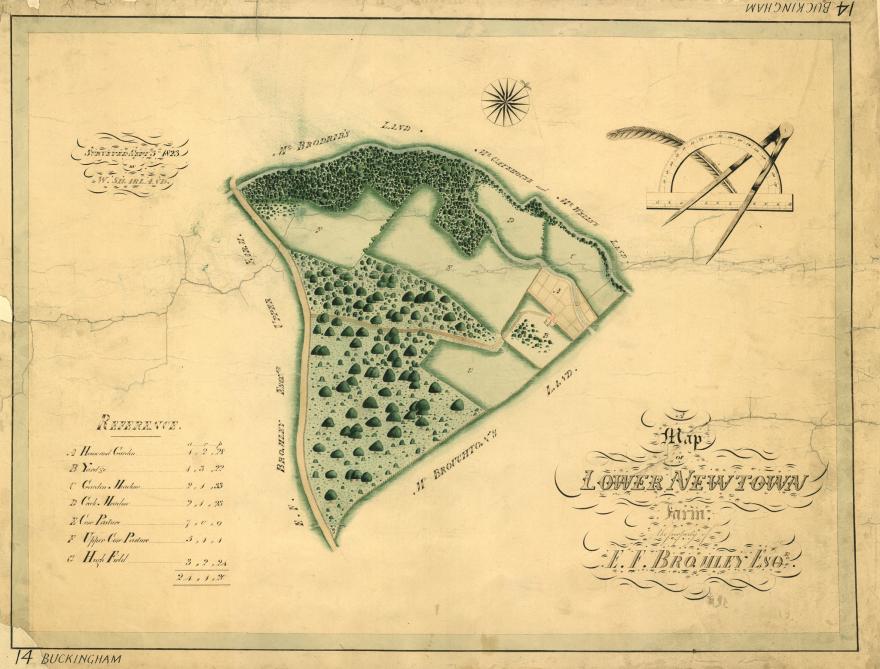
Legacy House Function Room
Rear 159 Macquarie Street
Hobart TAS 7000
Australia
In 1823, William Sharland drafted a map of Edward Foord Bromley’s property at New Town, just outside Hobart. Although the boundaries barely contained thirty acres and the map remained in manuscript form, filed as Buckingham 14 among a thousand others in the Tasmanian Archives, it had and continues to have a significance beyond its proportions. On looking more closely at the story behind Buckingham 14, questions about the details arise: are there too many fences? Why was this property mapped when none of Bromley’s neighbouring lands were? As Imogen Wegman pulled apart the narrative of this map the ephemerality of both the it and the landscape became clear. A multitude of motives underpinned the map's creation and the farm it shows. It is only by teasing apart its cracks and working in the few documentary records of Bromley’s property that we can finally grasp its purpose: it was a form of colonial boosterism designed to encourage colonial settlers into productive agricultural ways that would expand the British hold over these Palawa/Pakana lands. This story is made all the more intriguing because today no trace of the property remains in the landscape. It represents enormous change, and yet it might never even have existed.
Imogen Wegman is a Lecturer in Humanities at the University of Tasmania, where she is an interdisciplinary researcher and teacher. She coordinates the Family History Program, which teaches family and social history to non-traditional students online across Australia. Her research focuses on colonial environments as she uses GIS and digital methodologies to explore the relationships between colonisers and the physical landscapes they found themselves in. She teaches her students how to use maps in all aspects of their historical research, and she has turned many into self-professed ‘map nerds’. Imogen is a Chief Investigator on the ARC Linkage project ‘Everyday Heritage’ where she is part of a team working to understand the spatial world of Chinese Tasmanians in the 19th and early 20th centuries. Her monograph about colonial land granting practices is currently under review.